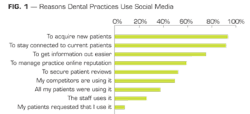Reducing remakes with CAD/CAM technology and new practitioners
By Charles Rodgers, DDS
What we have been able to witness at Pacific Dental Services® (PDS®)-supported offices has been remarkable. The dentist utilization of CAD/CAM-based technology has improved patient outcomes across multiple patient treatment procedure choices. This data is based on tens of thousands of treatment procedures performed over the course of several years. The clear trend illustrates a diminishing volume of crown remakes at the two-year mark over the course of the evaluation period. In order to evaluate a two-year failure rate, it is necessary to go back two years or more for original crown placements.
My guess was that CEREC CAD/CAM-based crowns would have a reduction in remakes. This was based on what I had seen firsthand, as well as my expanding knowledge of what CAD/CAM technology could provide. I also imagined that traditional crown remakes would stay static or shift very little.
As the graph shows, all crown choices had a reduction in remakes over the course of the two years. While one could ask, "Why switch crown choices at all since they've all improved?" the shift in volume percentage of CAD/CAM to non-CAD/CAM has completely tipped and is unlikely to reverse. The reasons for this are beyond the scope of this article, but some of the most obvious are same-day crown delivery, superior strength, and often superior cosmetics compared to traditional restorative choices.
Possible reasons for the ongoing decrease in the remake rates for all crowns:
- The large increase in the number of CAD/CAM crowns being provided has allowed repetition of clinical procedure by providers, promoting more consistent deliveries and outcomes.
- The use of digital technologies has allowed greatly magnified viewing of prep design, encouraging self-evaluation and improvement of prep skills. These improved skills can be applied across other types of crown choices, and to all patient restorative treatment choices.
- The use of digital technologies, which allows more accurate fitting of final restorations. This can include sending digital images through the CEREC Connect process. So the digital benefit can result even when the dentist is requesting more traditional crown choices. About 10% of crowns are currently sent through this process by PDS-supported dentists, though a majority of these requests are for monolithic milled ceramic restorations. In fact, over 80% are BruxZir and e.max.
- CAD/CAM choices of milling materials continues to expand, which allows practitioners to more specifically select materials to match patient needs, or to more accurately match desired patient outcomes for function and esthetics.
The number of dental practices supported by PDS grew by 100 during the years documented in the graph. This resulted in a dynamic that encouraged supported practices to pursue a higher number of new practitioners, and many were new graduates. From 2008 to 2011, the percentage of CAD/CAM-based crowns out of the total of all crowns went from just under 20% of all crown choices to slightly over 50% of all crown choices. For reference, in 2011, slightly over half of all crowns provided by PDS-supported dentists were CEREC-based. Today, PDS-supported dentists are using CEREC technology to produce 80% of all crowns.
There is clear evidence among PDS-supported dentists of a lower two-year remake rate with all crowns being performed. This has coincided with the expansion of over 100 facility locations, while simultaneously on-boarding the lowest age demographic of dentists in our organization's history. The current trend also supports the expectation of a continued favorable downward trajectory of remakes. We further anticipate a diminishing remake percentage due to the sharp focus on this, and the ongoing improvement of CAD/CAM technologies and materials, combined with the repetition of consistent, repeatable procedure choices. This has occurred with a higher ratio of new practitioners.
Charles Rodgers, DDS, is a graduate of Loma Linda University School of Dentistry. He has been affiliated with Pacific Dental Services since 1994. He is Vice President of Quality and Chair for their National Dental Advisory Board. He is a member of the ADA, CDA, and Orange County Dental Society.
Past DE Issues


